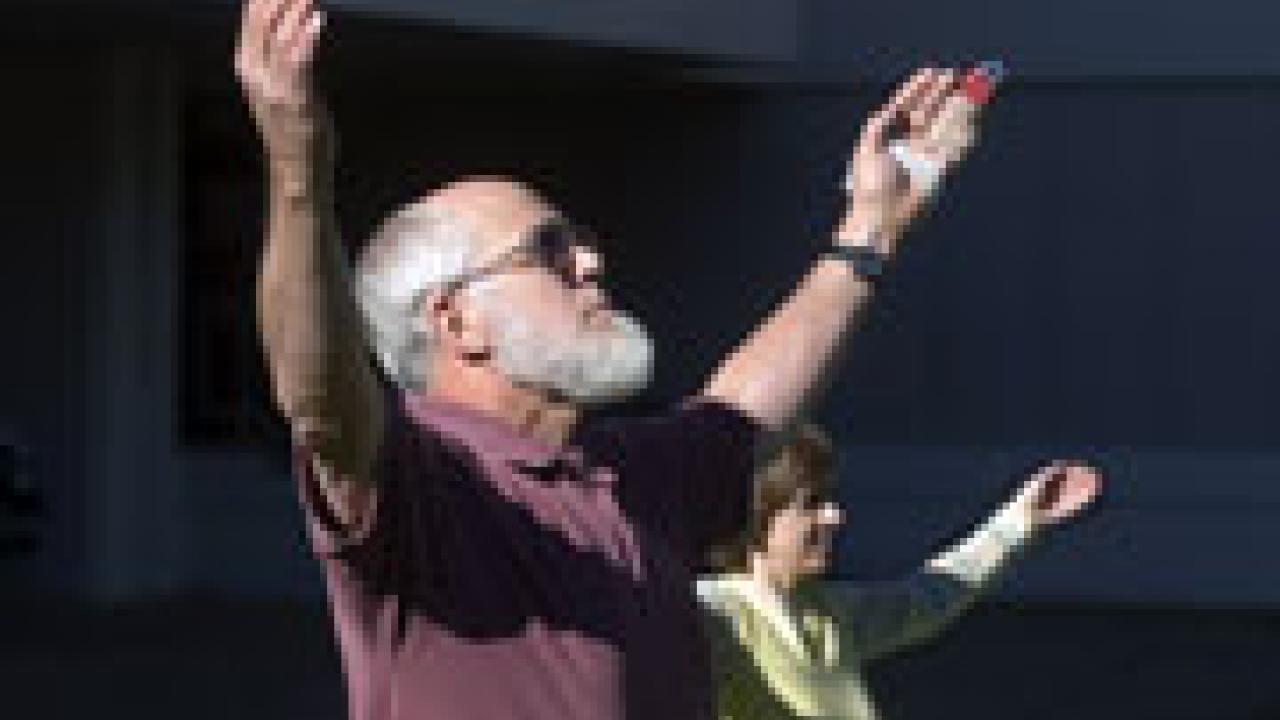Any weekday lunchtime, you might see John Neil balancing on one leg on the lawn outside the Chemistry Annex building. He's also balancing ancient Chinese philosophy and his own work in the center of modern science.
Neil practices Tai Chi, a martial art that emphasizes redirecting an opponent's energy by not providing resistance to push against. While Tai Chi movements are characteristically slow, the exercises give you a pretty good workout, Neil said.
According to Chinese philosophy, the exercises are supposed to move and channel the body's "Chi" energy. Neil, laboratory manager in the Thermochemistry Facility, readily admits that the concept does not really mesh with Western science.
"But if you were a monk 4,000 years ago, you needed an explanation for why these movements were effective," Neil said. And some concepts have a clear Western counterpart: for example, the "energy center" or "dan tian" happens to be close to the human body's natural center of gravity.
How long have you been at UC Davis?
I've been on campus for about six and a half years. I have a background as a geochemist, and I worked at the U.S. Geological Survey for about 15 years before coming here.
How did you get interested in Tai Chi?
Years ago I was stationed with the Army in Korea, and I took some Taekwondo classes. I enjoyed the structured patterns of the training but found the sparring encouraged aggression, which I didn't care for. I took some Tai Chi classes in the 1980s, then started regularly about seven or eight years ago at my health club.
I practice a fairly obscure style of Tai Chi called "Yi." I'm also interested in the "Ch'en" style, which is more complicated and more martial.
Tai Chi is a martial art, not a form of dance or moving yoga. You need to be aware of what you are supposed to be doing with these moves. But it's an internal or soft form, unlike the hard martial arts like karate.
The idea is to not provide resistance for an opponent to work against. It's sometimes described as "pushing against water:" if you push water gently it moves out of the way, but if you jump off a bridge and hit the water hard you get hurt.
What do you get out of it?
It's very good exercise. If you hold positions and move from one to another, you can really break a sweat.
And you learn balance, how to use body mechanics most effectively, and awareness of your body. There is a meditative aspect to it. It's very addictive.
How often do you practice?
About ten hours a week — lunchtimes and evenings, and I take classes on Friday and Sunday. One of the students from the lab has just started doing the exercises with me as well.
The forms of Tai Chi are basically a series of related moves that you have to learn. When you get very good, you can improvise moves.
What do you do on campus?
I'm a staff scientist and lab manager for the Thermochemistry Facility, which is Alexandra Navrotsky's research group and part of the NEAT (Nanomaterials in the Environment, Agriculture and Technology) organized research unit. The lab measures the thermodynamic properties of inorganic materials, and then we can relate other properties of a material, such as structure or surface area, to those thermodynamic properties.
It's very basic science. We fill the data tables that chemists and materials scientists and others use for their research.
You could say I take care of the day to day details of running the group — supplies, making sure equipment is running, safety and hazmat issues, that kind of thing. My focus is on helping the members of the group get their work done.
There's a lot of interaction in the group. I often find myself explaining anything from how some piece of equipment works to some American idiom I have just used. Last year during the election I did a lot of explaining of the American electoral system.
What is the best part of your job?
Working with 15 to 20 very bright young scientists.
Media Resources
Andy Fell, Research news (emphasis: biological and physical sciences, and engineering), 530-752-4533, ahfell@ucdavis.edu
